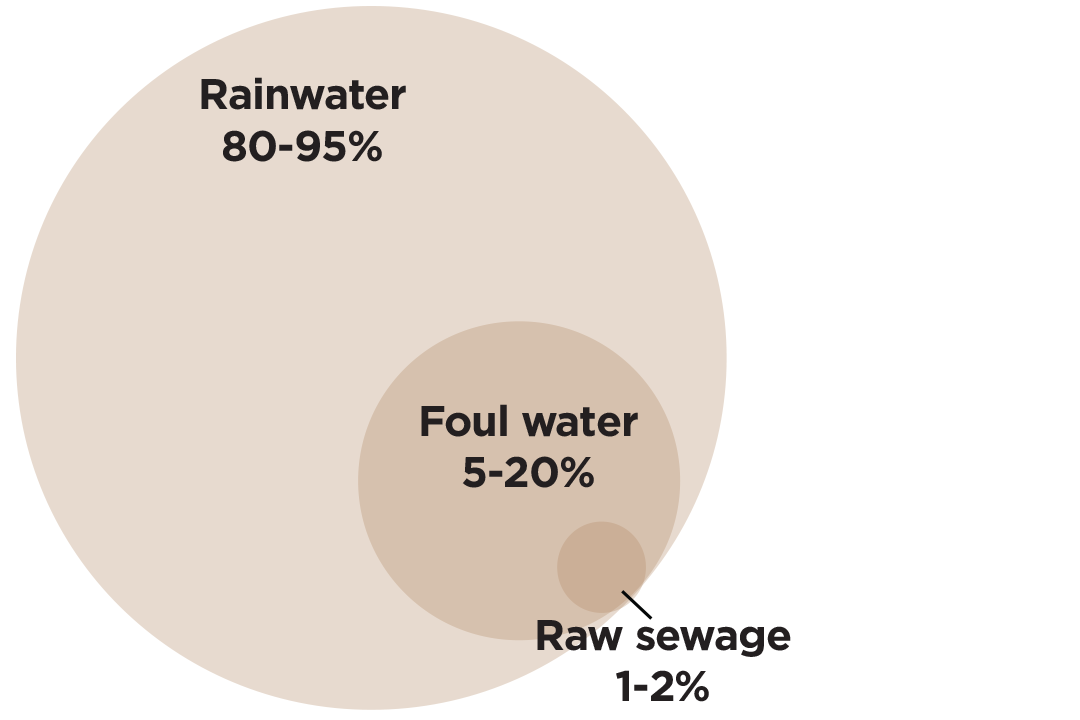Storm overflow performance.
Storm overflows are designed to spill excess storm water when the capacity of the sewer network prior to or at the wastewater treatment works is overwhelmed during heavy rainfall. Without storm overflows, many more properties, businesses and roads would be flooded with wastewater.

Spills contain both rain and foul water. During times of heavy rainfall, spills typically contain around1-2% of raw sewage. A high volume of spilling at a storm overflow is not necessarily classified as unsatisfactory. This is typically because, when it spills, it does so into a relatively large, fast-moving body of water, where the discharge rapidly disperses with much reduced impact on nature.
Drainage Area Study (DAS) models are used in the absence of actual flow monitoring to help us and the Northern Ireland Environment Agency (NIEA) to understand what is happening in the wastewater system and where upgrades are required to better protect the environment. They help us to understand the volume and frequency of storm spills at each storm overflow in an average rainfall year. The modelling data excludes the continuous release of treated, recycled final effluent from our wastewater treatment works, as we do not classify this as a spill.
The models have some limitations. They do not, for example, take account of operational conditions in the actual network, such as the build-up of silt and blockages which can result from the disposal of inappropriate materials to sewer.
Our predictive models indicate that:
- 16 to 20 million cubic metres of wastewater is spilling each year - a figure that may rise by around 10% when all modelling is complete.
- Our ten largest spilling storm overflows account for around one third of the total volume of forecast spills.
The most recent modelled data is available by clicking here.
FAQs
Are the models reliable?
The models we use are built and calibrated to industry best practice and are approved by the NIEA. While they report a specific number in terms of volume and number of spills, we typically advise applying a tolerance of around +/-10% to the results.
What historic period of rainfall is used within the models?
They typically simulate using 20 years of historical rainfall data to generate an annual average for frequency and volume of spills.
Can NI Water use the model to understand what is happening in a specific year?
The models consider what is happening in an average rainfall year and not a specific year. To understand what is happening in a specific year we will need to deploy monitoring equipment.
What method is used to count annual spill frequency?
The annual spill frequency reported from the models is counted using the industry standard 12/24 block counting method which works as follows:
- Start counting when the first discharge occurs.
- Any discharge (or discharges) in the first 12-hour block are counted as one spill.
- Any discharge (or discharges) in the next and subsequent 24-hour blocks are each counted as one additional spill per block.
- Continue counting until there is a 24-hour block with no discharge.
- For the next discharge after the 24-hour block with no discharge, begin again with the 12-hour and 24-hour block spill counting sequence.